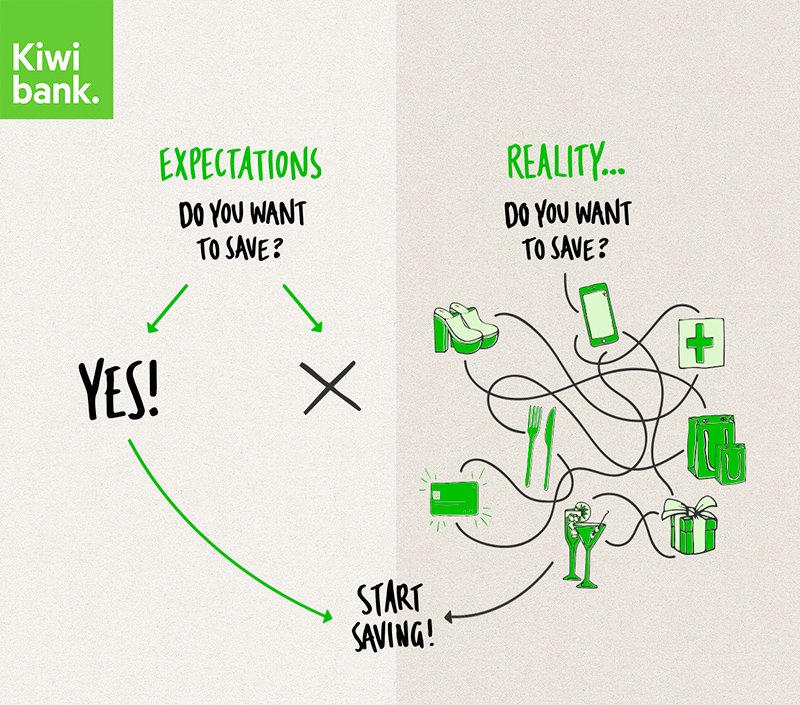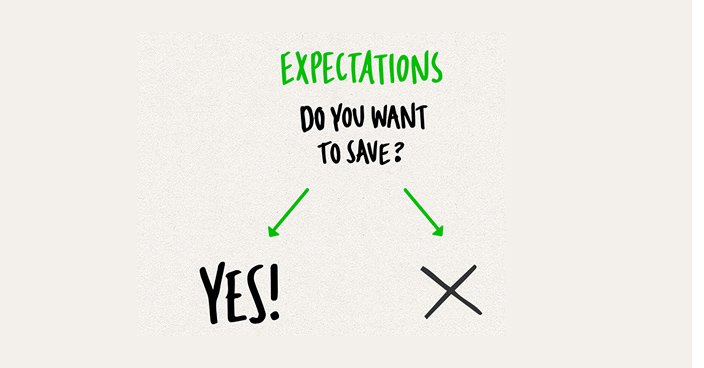The problem is your brain. You don’t really know what it’s doing. It acts automatically in ways that aren’t always in your best interest. Have you ever looked back at an irrational decision you made and wondered how that happened? No? Well, um, me neither.
This is a beginner’s guide to recognising how your brain works – so that you can bypass its shortcomings and be more savvy about saving money.
Perception is everything
I’m guilty of reasoning that I can’t save because I don’t have spare money to put aside. But is that really the case? A 2014 Polish study found that how we perceive our financial situation can influence whether we’ll bother to save; even if we have the means to save, we seldom make the effort if we don’t believe that’s the case. All it takes to counter the blanket “But I’m skint!” argument is a little knowledge of your financial status. Time to scratch a crude budget on the back of an envelope.
Know your mindspace
Although MINDSPACE sounds like an interstellar cult or a deliberately retro video game, it’s actually a framework for considering behavioural influences commissioned by the UK government. The idea is that once you know the context in which you make decisions, you can change that context in your favour. It’s also a mnemonic (I’m not just writing in all caps because I’m angry). MINDSPACE* stands for:
-
Messenger: We are heavily influenced by who communicates information to us.
-
Incentives: Our responses to incentives are shaped by predictable mental shortcuts, such as strongly avoiding losses.
-
Norms: We are strongly influenced by what others do.
-
Defaults: We “go with the flow” of preset options.
-
Salience: Our attention is drawn to what is novel and seems relevant to us.
-
Priming: Our acts are often influenced by subconscious cues.
-
Affect: Our emotional associations can powerfully shape our actions.
-
Commitments: We seek to be consistent with our public promises, and reciprocate acts.
-
Ego: We act in ways that make us feel better about ourselves.
Nudge yourself towards better saving habits
Looking at that list, the MINDSPACE cues most relevant to my saving behaviour are Commitments (I often I say I’ll do a thing, and then don’t) and Messenger (I don’t act until I have all the facts – but seldom bother enquiring about them).
Research suggests that just asking people about their intentions can help spark that behaviour later. So I need to talk to someone I respect to crystallise my saving intentions. And declare those intentions to someone close who will help hold me to task. I know just the person.
Writing helps, too. There’s good evidence that merely recording your commitment in writing increases the likelihood that you’ll stick to it.
Be the hero of your own story
A 2014 Swedish study found that storytelling helped consumers process financial information and products. The narrative format provoked a stronger "emotive response" and intention to learn more. Yes, this may be more useful to a marketing department, but it’s also relevant to visualising your own saving success. Have you considered how you want your financial story to play out across your lifetime? Have you ironed out those plot holes?

The road ahead of you
Research indicates that when it comes to saving money we tend to heavily discount the future over the needs of the present. Although the future is highly likely to occur, we treat it as an abstract concept.
Making the future seem more tangible doesn’t have to be hard. Tweaking your behaviour towards saving money successfully is mostly about awareness. Know (and declare, to an appropriate someone) what your financials look like and what your saving intentions are.
Be aware of your brain’s tendency to sabotage your efforts, and head it off at the pass whenever it threatens to roam astray.
________________________________________________________________________________________________________
* The MINDSPACE breakdown is directly quoted from "Influencing Behaviour: The Mindspace Way” – see reference below.
References (I didn’t just make this up)
Carlander, A., Carlsson Hauff, J., Gamble, A., Gärling, T., & Holmen, M. (2014). Storytelling as a means to increase consumers’ processing of financial information. International Journal of Bank Marketing, 32(6), 494-514.
Dolan, P., Hallsworth, M., Halpern, D., King, D., Metcalfe, R., & Vlaev, I. (2012). Influencing behaviour: The mindspace way. Journal of Economic Psychology, 33, 264-277.
Rószkiewicz, M. (2014). Objective and subjective factors shaping saving behaviours: The case of Polish households. International Journal of Consumer Studies, 38(6), 602-611.________________________________________________________________________________________________________
Author bio
Richard Allardice is a writer and former professional explainer (school teacher) working at Springload. He’s been involved with banks his whole life, because that’s where he keeps his cash. Read more of his work.



